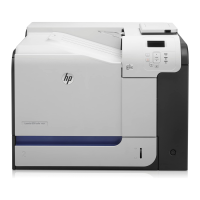FUP Commands
File Utility Program (FUP) Reference Manual—523323-014
2-53
COPY: Copy Form Guidelines
The [NO] COMPACT option affects copy operations for relative IN files only. If you
specify NO COMPACT when you are copying another type of file, this message
appears:
WARNING - COMPACT OPTION IGNORED FOR NONRELATIVE FILES
If the AUDIT option is set for out-filename, the copy request fails with file-
system error 75 (requesting process has no current process transaction identifier).
Be careful when using the PAD and TRIM options in a FUP COPY or LOAD
operation. If it contains trim-character or pad-character, data can be
altered or lost.
If you pad each record in a data file with zeros to a standard size in bytes, store the
records in another file, then trim the trailing zeros when you FUP COPY or LOAD
the stored records. Any original data ending with zero is also trimmed.
To avoid this problem, use a pad-character or trim-character that is not
contained in your data.
If you enter the DENSITYOUT parameter for a tape drive that is not a model 5106
or 5130, the COPY command continues without setting the tape density, and this
message appears on the home terminal of the FUP process:
WARNING -filename: DRIVE DOES NOT SUPPORT DENSITY
SELECTION
If you enter the TAPEMODE parameter to a tape drive that does not support the
setting, this warning message appears on your terminal, and the COPY operation
continues without trying to set the tape mode:
WARNING - filename: DRIVE DOES NOT SUPPORT TAPEMODE
SELECTION
The COPY command cannot copy SQL files that are not SQL object files. You
must use SQLCI COPY instead.
In a COPY command, you can specify both in-filename and destination-
filename as an enhanced key-sequenced file or legacy key-sequenced file.
If the in-filename is a legacy key-sequenced file and destination-
filename is an enhanced key-sequenced file, the data is copied into the
destination file starting from the first secondary partition.
If the in-filename is an enhanced key-sequenced file and destination-
filename is a legacy key-sequenced file, the data in the source file starting from
the first secondary partition is copied into the destination file starting from the
primary partition.
You can use the unstructured option to copy the data into individual partitions of
an enhanced key-sequenced file. If the source file is a primary partition of an
enhanced key-sequenced file and the unstructured option is used, the COPY
command is executed but the metadata in the primary partition is not copied.
